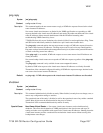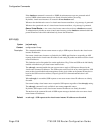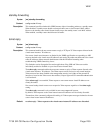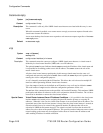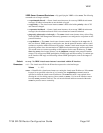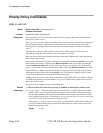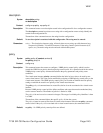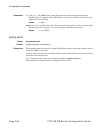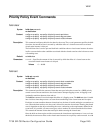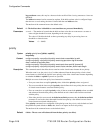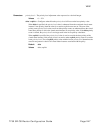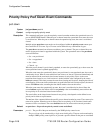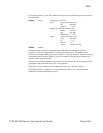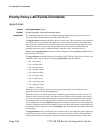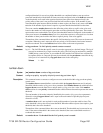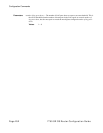
VRRP
7750 SR OS Router Configuration Guide Page 245
Priority Policy Event Commands
hold-clear
Syntax hold-clear seconds
no hold-clear
Context config>vrrp>policy vrrp-policy-id>priority-event>port-down
config>vrrp>policy vrrp-policy-id>priority-event>lag-port-down
config>vrrp>policy vrrp-policy-id>priority-event>route-unknown
Description This command configures the hold clear time for the event. The seconds parameter specifies the hold-
clear time, the amount of time in seconds by which the effect of a cleared event on the associated
virtual router instance is delayed.
The hold-clear time is used to prevent black hole conditions when a virtual router instance advertises
itself as a master before other conditions associated with the cleared event have had a chance to enter
a forwarding state.
Default no hold-clear
Parameters seconds — Specifies the amount of time in seconds by which the effect of a cleared event on the
associated virtual router instance is delayed.
Values 0 — 86400
hold-set
Syntax hold-set seconds
no hold-set
Context config>vrrp>policy vrrp-policy-id>priority-event>host-unreachable
config>vrrp>policy vrrp-policy-id>priority-event>lag-port-down
config>vrrp>policy vrrp-policy-id>priority-event>port-down
config>vrrp>policy vrrp-policy-id>priority-event>route-unknown
Description This command specifies the amount of time that must pass before the set state for a VRRP priority
control event event can transition to the cleared state to dampen flapping events. A flapping event
continually transitions between clear and set.
The hold-set command is used to dampen the effect of a flapping event. The hold-set value is loaded
into a hold set timer that prevents a set event from transitioning to the cleared state until it expires.
Each time an event transitions between cleared and set, the timer is loaded and begins a countdown to
zero. When the timer reaches zero, the event is allowed to enter the cleared state. Entering the cleared
state is dependent on the object controlling the event, conforming to the requirements defined in the
event itself. It is possible, on some event types, to have another set action reload the hold-set timer.
This extends the amount of time that must expire before entering the cleared state.
Once the hold set timer expires and the event meets the cleared state requirements or is set to a lower
threshold, the current set effect on the virtual router instances in-use priority can be removed. As with



